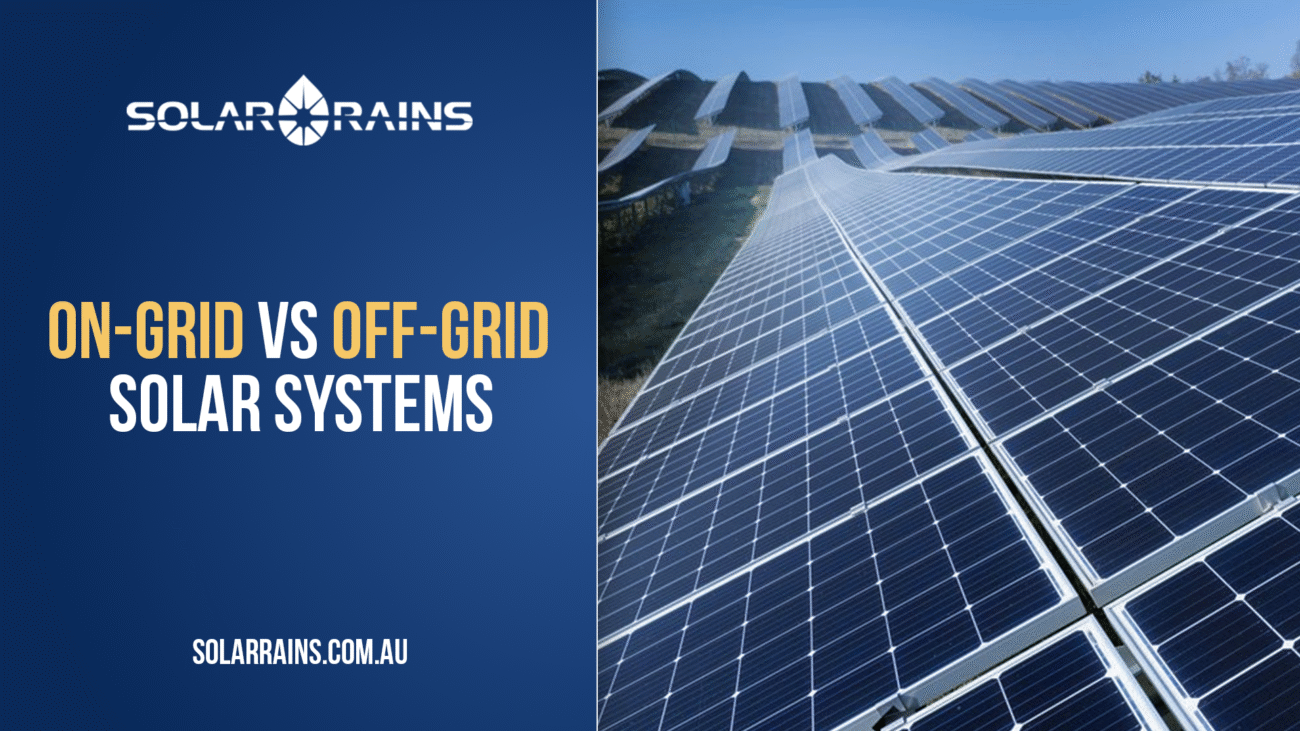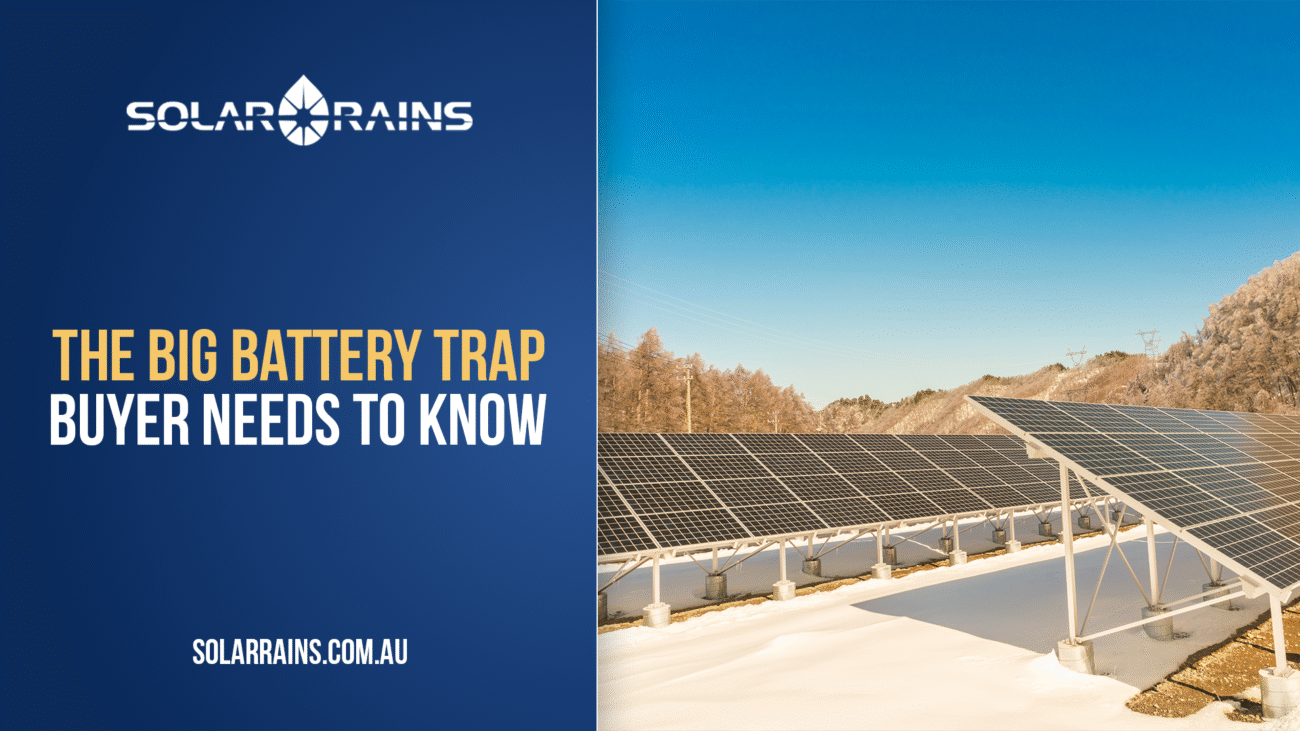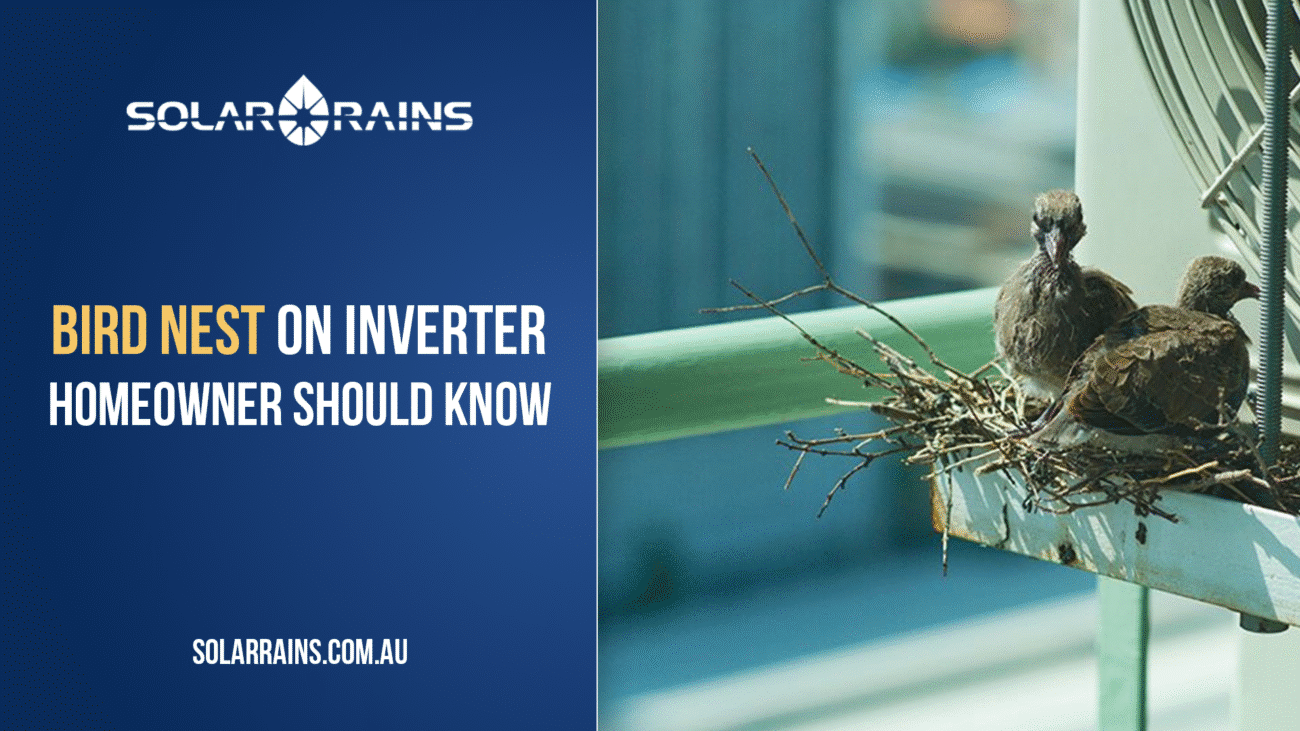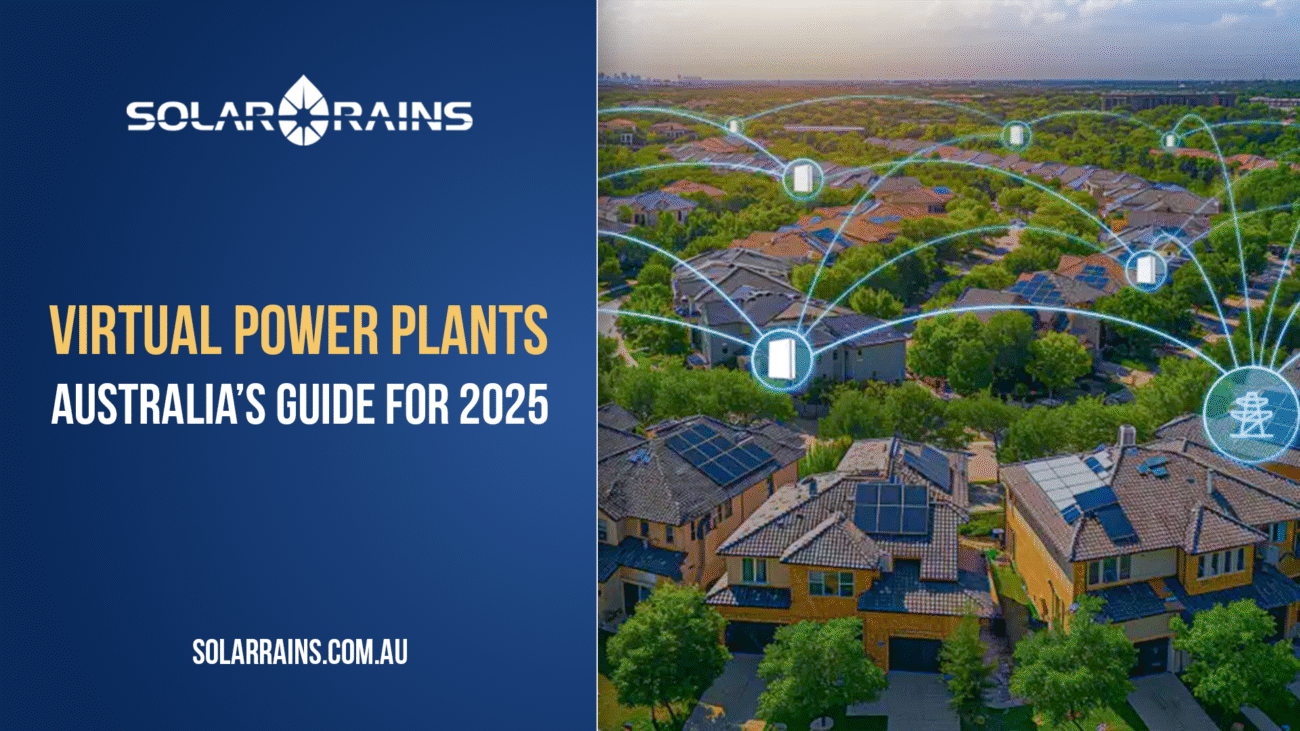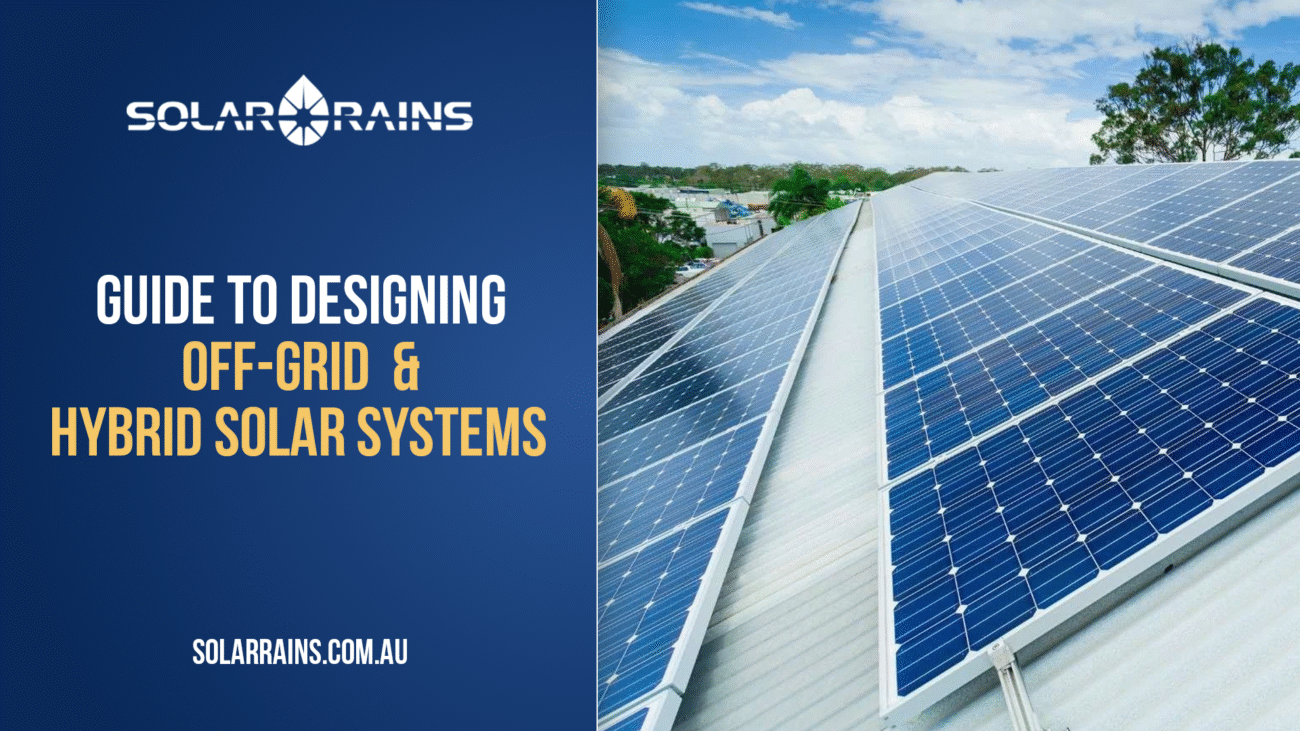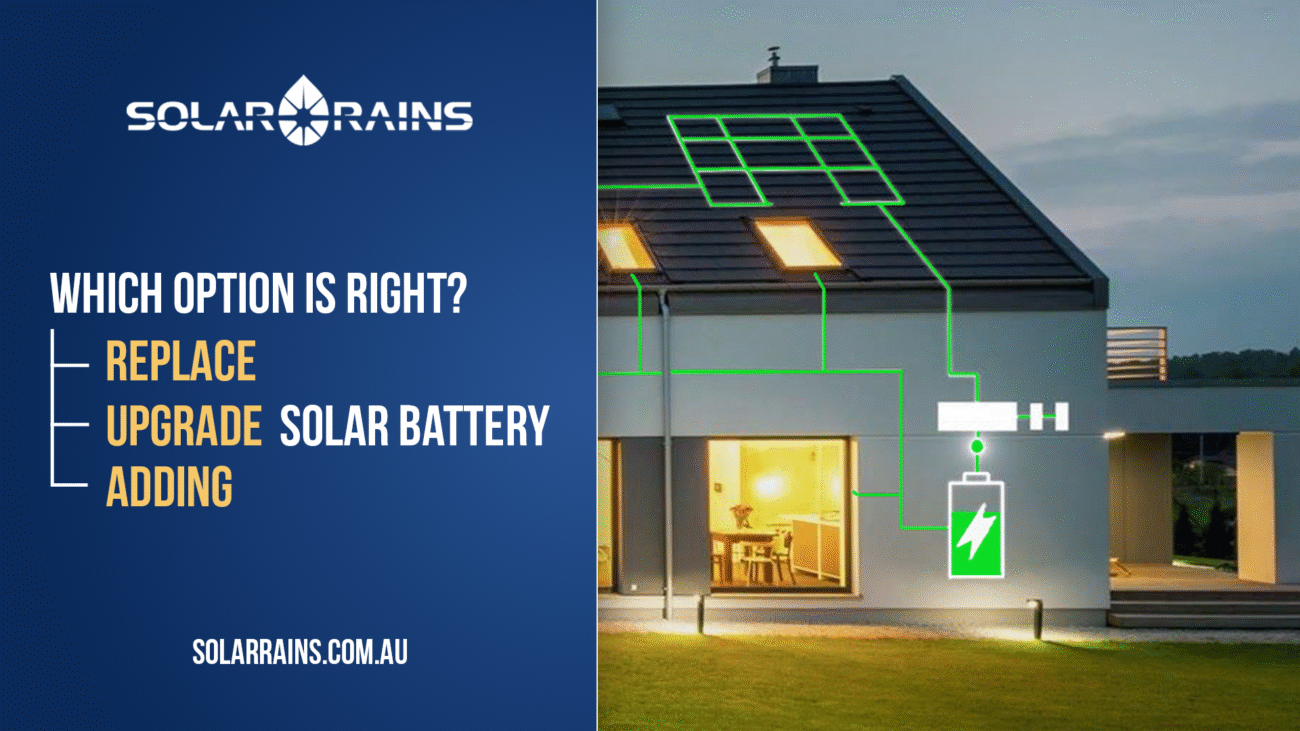As solar adoption continues to rise across Australia, homeowners and businesses are increasingly faced with a key question: Should you install an on-grid or off-grid solar battery system?
While both options harness the power of the sun, their design, benefits, and use cases differ significantly, especially when it comes to solar battery integration. In this guide, we’ll break down everything you need to know about these two systems, including their advantages, drawbacks, cost considerations, and how solar batteries play a pivotal role in each setup.
What Is an On-Grid Solar System?
An on-grid (or grid-tied) solar system is connected to the national electricity grid. When your solar panels generate more electricity than your home uses, the excess is exported to the grid. When your system doesn’t produce enough (like at night), you can draw power from the grid.
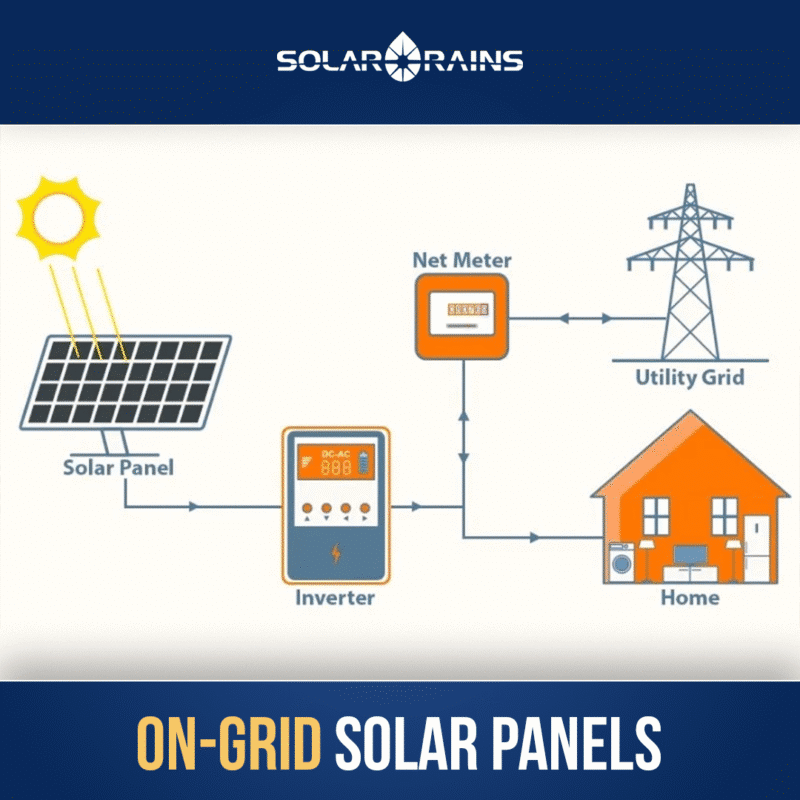
Advantages of On-Grid Systems
- Lower upfront cost: No need for a large battery system unless you want backup.
- Feed-in tariffs: You may earn credits or rebates for exporting power to the grid.
- Reliable backup: If solar output drops, you always have grid electricity available.
- Scalable: Can be easily expanded with additional panels or solar batteries.
Disadvantages of On-Grid Systems
- Blackout vulnerability: Most on-grid systems automatically shut down during a grid outage for safety, unless equipped with a hybrid solar battery.
- Rising grid costs: Electricity prices have surged over the years, reducing the benefit of relying on the grid.
- Feed-in tariff decline: Rebates are no longer as lucrative as they once were.
What Is an Off-Grid Solar System?
An off-grid solar system operates independently from the electricity grid. It requires a robust solar battery setup to store energy for use at night or during cloudy days.
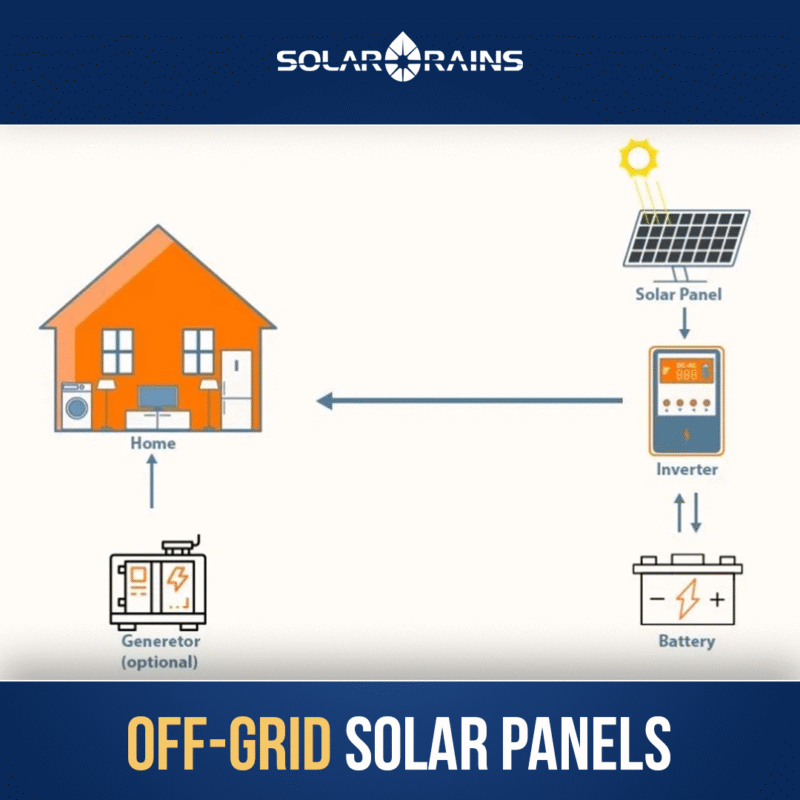
Advantages of Off-Grid Systems
- Total energy independence: You’re not affected by grid outages or price hikes.
- Great for remote properties: Ideal for farms, regional homes, or places without grid access.
- Customisable autonomy: You can tailor your system to your lifestyle and energy needs.
Disadvantages of Off-Grid Systems
- Higher upfront investment: Requires larger solar battery banks and smart inverters.
- Limited redundancy: You can’t fall back on the grid if your battery runs low.
- More complex design: Requires accurate forecasting of your power consumption to size the system correctly.
Key Differences Between On-Grid and Off-Grid Solar Systems
| Feature | On-Grid | Off-Grid |
| Grid Connection | Yes | No |
| Solar Battery | Optional (but recommended) | Mandatory |
| Backup Power | Only with battery | Always available (if designed properly) |
| Upfront Cost | Lower | Higher |
| Energy Independence | Partial | Full |
| Ideal For | Urban & suburban homes | Remote locations & self-sufficiency seekers |
Where Solar Batteries Come In
Regardless of which system you choose, a solar battery improves functionality, independence, and savings.
How a Solar Battery Works
A solar battery stores unused solar power generated during the day for use at night or during outages. Popular types include:
- Lithium-ion (LiFePO4): Durable, safe, and widely used in Australian homes.
- Lead-acid: Cheaper upfront but less efficient and shorter lifespan.
Benefits of Adding a Solar Battery
- Reduce power bills by avoiding peak-hour tariffs
- Store solar power for cloudy days or night use
- Power essential loads during outages (with hybrid inverters)
- Participate in VPPs (Virtual Power Plants) to earn passive income
- Lower carbon footprint by reducing grid reliance
Pro tip: Explore Solar Rains’ selection of hybrid and off-grid solar batteries to find the right fit for your property.
Should You Go On-Grid or Off-Grid?
The choice comes down to your location, lifestyle, and energy goals. Ask yourself:
Choose On-Grid If:
- You live in a metro or suburban area with stable grid access
- You want a lower upfront cost
- You plan to export solar back to the grid
- You want the option to add a solar battery later
Choose Off-Grid If:
- You live in a remote or regional area with no reliable grid connection
- You want complete energy autonomy
- You’re prepared for a higher upfront investment
- You’re ready to manage your energy consumption actively
Solar Batteries in the Australian Context
Stats to Know (2025 Data)
- Over 4.2 million homes have rooftop solar (Clean Energy Council)
- More than 120,000 solar battery installations nationwide
- Most common battery size: 10–15kWh
- Average battery price: $8,000–$15,000 (depending on size & brand)
Policy & Rebates
- Small-scale Renewable Energy Scheme (SRES): Offers STCs (small-scale technology certificates) that reduce upfront solar battery costs.
- Cheaper Home Batteries Program: Federal initiative providing average 30% off battery installations in 2025.
- State-specific rebates: Available in VIC, SA, and NSW. Check with your state government site for eligibility.
Financial Considerations
| Item | On-Grid | Off-Grid |
| Typical System Size | 6.6kW with 10kWh battery | 10kW+ with 20kWh+ battery |
| Estimated Cost | $12,000–$18,000 | $25,000–$45,000 |
| ROI Timeline | 5–8 years | 8–12 years |
| Potential Savings | Up to $1,200/year | Up to $2,000/year |
Real-Life Use Case Examples
Urban Homeowner in Melbourne – On-Grid + Battery
Jane lives in a townhouse and installs a 6.6kW solar panel system with a 10kWh solar battery. Her bills drop by 70%, and she earns credits by exporting excess energy.
Off-Grid Farm in Outback QLD
Mark manages a sheep station. With no reliable grid access, he installs a 12kW solar array, 25kWh battery bank, and backup generator. He achieves full independence and reduces diesel reliance by 90%.
FAQs: On-Grid vs. Off-Grid Solar Battery Systems
Yes! That’s called a hybrid solar system—the best of both worlds.
No, unless you have a solar battery and hybrid inverter with blackout protection.
Most lithium-ion batteries last 10–15 years with proper maintenance.
Absolutely. Many systems are battery-ready for future upgrades.
It requires planning and monitoring, but new systems are increasingly automated and user-friendly.
Final Thoughts: Which Solar Setup Is Right for You?
The choice between an on-grid and off-grid system isn’t about which is “better”, it’s about what’s best for your goals, budget, and location.
Adding a solar battery to either system amplifies your benefits, giving you backup power, energy control, and lower bills.
Whether you’re a city homeowner looking to reduce peak-hour costs or a remote landowner seeking total independence, Solar Rains is here to help you design the ideal solar solution.

